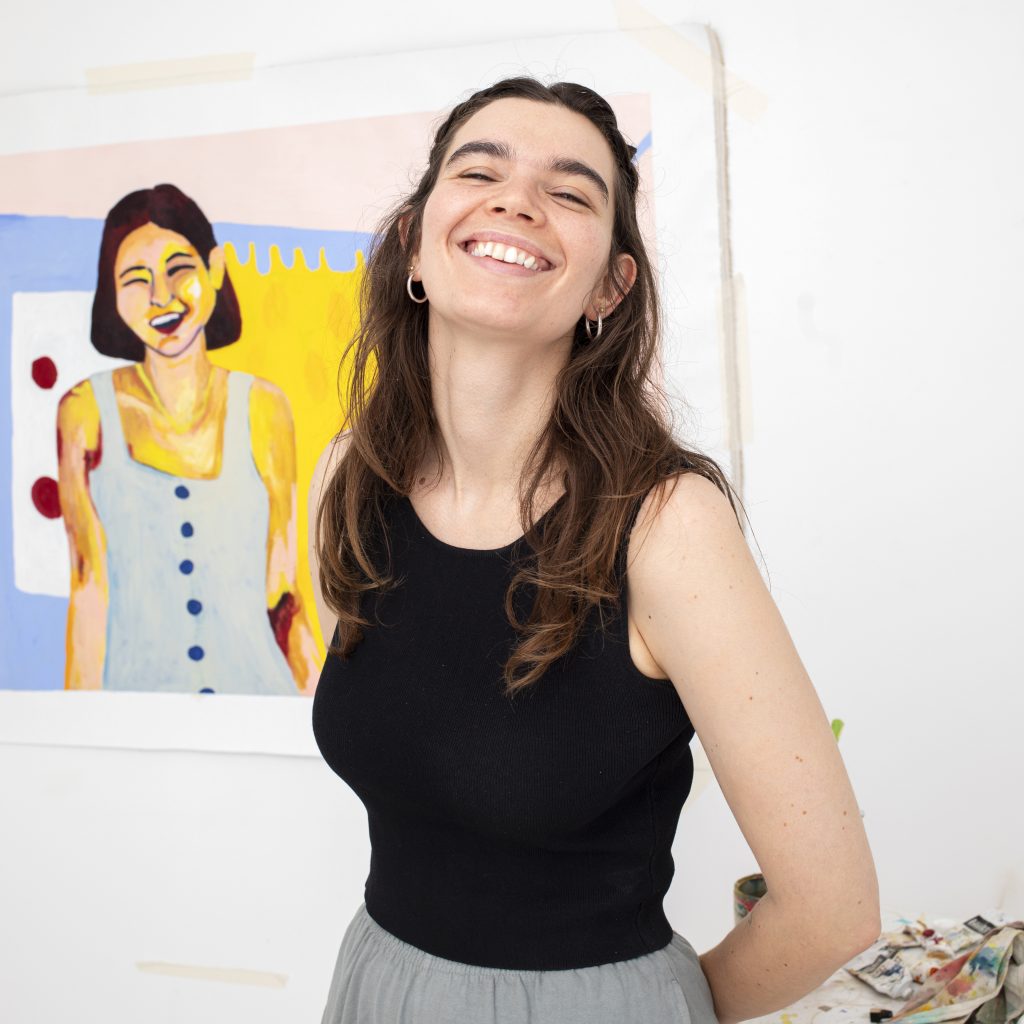
 In Conversation: Dora Dalila
In Conversation: Dora Dalila
Dora Dalila Cheffi (b. 1990, Helsinki) is a Finnish-Tunisian visual artist, living and working in Tunis. In her paintings, she investigates the everyday life experience, be it personal or collective, through portraits, still life, interiors, and different sceneries. Besides painting, Cheffi also works in sculpture, video, and weaving. She graduated from Pekka Halonen Academy in 2014 with a concentration in Photography. In 2018, she received a BA from Aalto University School of Art, Design, and Architecture, with a minor in sculpting and painting. From 2017, Cheffi has shown her work in solo and group exhibitions. Most recently, Bitter Oranges in Tunis, Screenshots of Novel Realities with The Other Space by Andersen’s Contemporary, the Middle Sea with l’Institut finlandais, Summer Show with Selma Feriani Gallery, Imitating Equilibrium with Taymour Grahne Projects, and K OFF with Gabes Cinema Fen. Her work has made it into public collections, including the Kamel Lazaar Foundation collection (Tunis), the permanent collection at the Museum of Contemporary Art Al Maaden (Marrakech), the Beth Rudin De Woody collection (New York, Los Angeles, and West Palm Beach), as well as private collections in Amsterdam, Helsinki, Los Angeles, Paris, Seoul, Tunis, and Zurich.
Wadha Al-Aqeedi: Could you briefly introduce yourself.
Dora Dalila: My name is Dora Dalila Cheffi, 31 years old, and I am a Finnish-Tunisian artist. I like to explore different kinds of mediums in art. But, at the moment, I’m focused on three main mediums: painting, sculpting with ceramics, and video works.
I was born and raised in Finland, which is also where I studied. For my undergraduate degree, I studied Photography at Pekka Halonen Academy (2012-2014). Then, I studied Art Education at Aalto University School of Art, Design and Architecture (2014-2018). I finished my Bachelors, but I did not carry on to my Masters, because I did not want to take the teaching path and obtain a license in that particular profession. I never really felt like that was something I wanted to do. So then, I moved to Tunisia, where I’ve been based for almost three years now. I think I will continue to be based here, but hopefully, I will get to travel and do some residencies or show my work elsewhere.
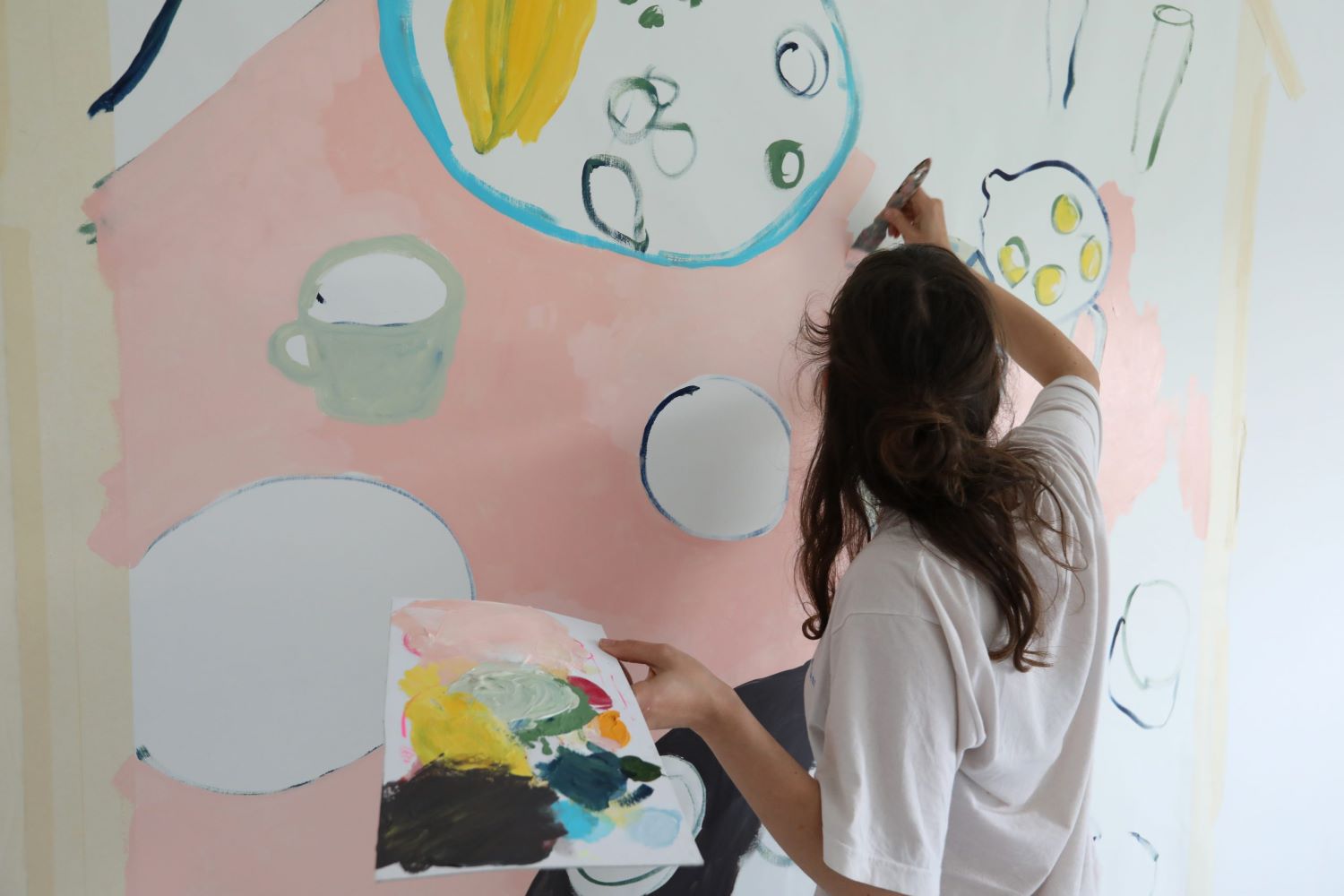

WA: What originally drew you to art in general? Also, how did your interest shift from photography to different mediums (painting, sculpting, and video work)?
DD: I was never really into arts, even after I finished my secondary education. I was not particularly good at it either. I mean, I was okay in school, always getting good grades in arts. But then again, everyone else did too. I never practiced it as a hobby, nor did I spend my childhood drawing or anything. As a matter of fact, I did not think that I could draw until later when I went to university. After finishing high school, I was working at my dad’s office as a secretary. Back then, I started a Tumblr where I posted pictures that I took. I always liked taking pictures, but never thought that a career could come out of it. And then, I recall visiting my family friend’s house in London, where I was taking pictures with my small camera there. Our family friend looked through the photos and he said, “Oh, these are really good and you have something,” even though the pictures were basic with a blurry background. Nonetheless, he encouraged me. I thought, “Okay, well, maybe I’ll just take more photos then.” So, I carried on, just taking pictures.
Like I mentioned earlier, I was working at my dad’s office as a secretary; I was horrible, and I hated it. So, I decided to apply to any school. I didn’t care for any major specifically. And then I thought, “Well, I’m not really particularly good at anything, but I like taking pictures so let me try to apply to a photography school.” At that point, I still didn’t think that it could have been much of a career or anything. But then I got in, and it was a big shock to my dad who felt that it was the worst thing I could have ever done. Despite that, I liked it.
During my studies, I did a few internships which helped me get some clients and contacts. I did one internship at an art and culture magazine, and then another one at a company. They were two completely different worlds. I met a lot of people through the magazine who encouraged me to be more artistic, and it was the first time that I would hear someone saying that my drawings are interesting. It was validating, because before I draw, I always take a picture first, and I then draw from the picture. It always felt like cheating, because someone told me once that you should never draw from a picture, and that it’s not okay. So then, because of the images, I also started working with videos, which felt like a natural transition to me. Filming in Finland is different because it is more animated. But, if I shoot something in documentary style, or whatever, it’s usually very static. And so it could be a photograph, but it’s moving. So then from video, I got into painting, or drawing, because I did some courses at school. In fact, for my final thesis project, I made it about the idea that I can not draw. The project was titled I cannot draw, because I started thinking about why I had spent 25 years of my life thinking that my hands can’t form shapes. What’s a good drawing or what’s a good picture? What’s a good painting? Even now, I don’t particularly consider myself as someone who knows how to draw, which I don’t mind. I like the faces a little wonky. In the end, I feel like it makes it more interesting for me.
And I think, because I have a background in photography, whatever I usually do, the base is always a photograph. So even if I’m making a series of sculptures, I would always have some type of reference photo that I’ve taken, or some reference of an experience I’ve lived, or something I witnessed.
I think with the upcoming body of work I’m currently working on, there is more process and thinking. I’m also taking some risks that I wouldn’t normally take. With the video works, I play with what’s real, what’s fiction and what’s imaginary. I rarely build something behind the video image or anything, because it is always filmed in documentary style which is reality. So now, I’m trying to figure out how to tell a story, but maybe in different ways. I feel like whatever image I work with, it is kind of the same for me, because I have the base in the photograph. But more important than the photograph is the story and the narrative. So it doesn’t matter what the medium is. I think, for me, it’s about the story that I kind of want to tell or the narratives that I want to communicate.
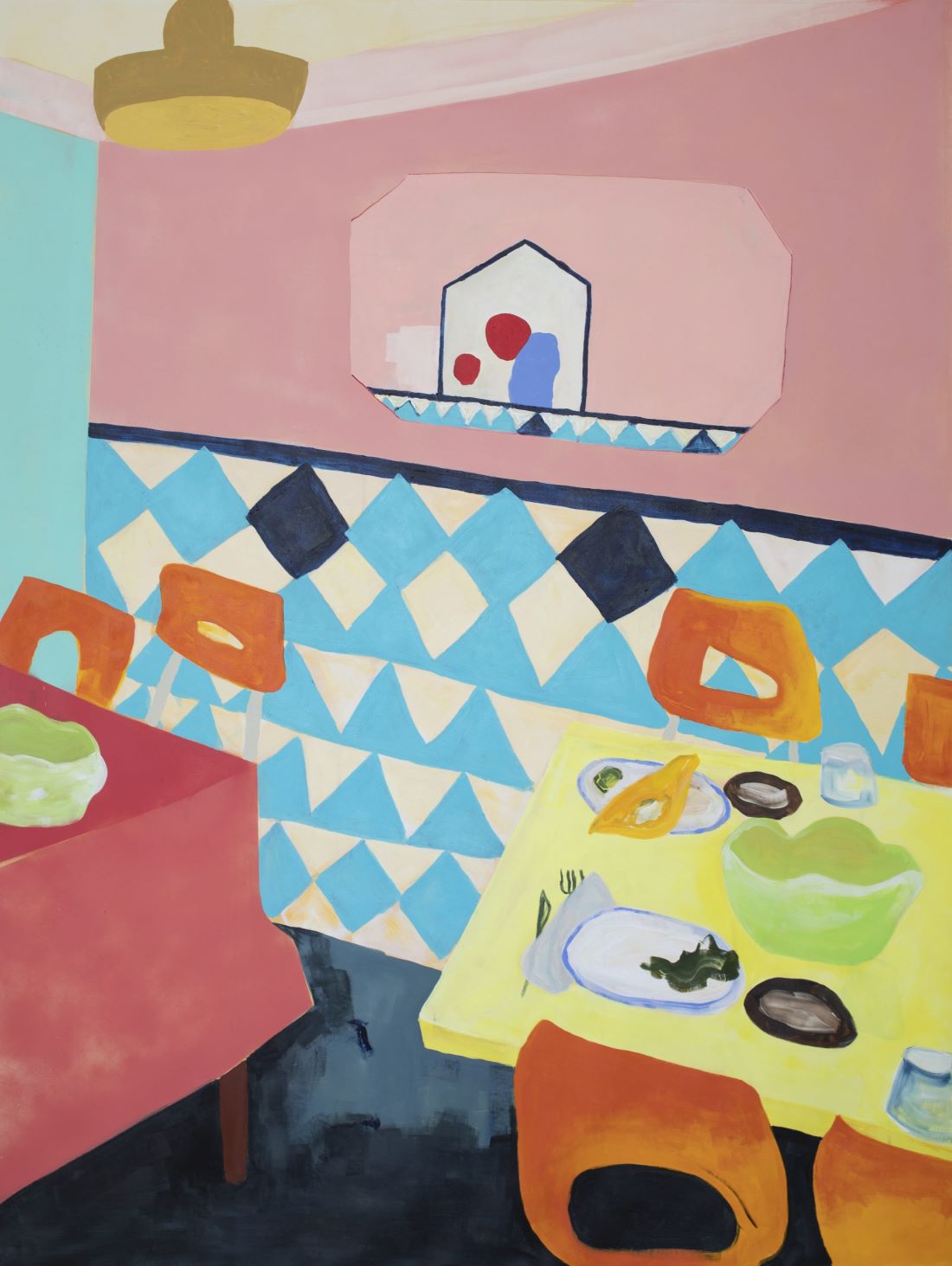

WA: You mentioned that you grew up in Helsinki, in Finland, for most of your life. And if I’m not mistaken, you spent a lot of your summer holidays in Tunis. And you’ve recently moved to Tunisia, living there for about three years now. What was the transition like for you?
DD: It’s been very intense. I have never lived outside Finland. I just knew things [in Tunisia] that I would do when I would come in the summertime, which usually involve a lot of family and things that revolve around that. But, Tunisia is a very easy place to get to know people. For some reason, it’s also a very tough place, because there are a lot of judgments. And I feel like for me, I constantly find myself apologising a little bit about this certain type of privilege that I have, because I was born outside and I might have more opportunities because of my European passport. Also, the complexity of growing up between two different worlds is really difficult for me. I mean, it was difficult because for most of my life, until I moved here, I always felt like I’m half this and half that – split in half. That’s why, through my works, I can bring the two worlds visually and physically together and also accept that both worlds live in me.


In fact, even when I was living in Finland, I felt a little bit of an outsider. I use this as my fuel. It’s kind of cool to not belong. But then also, you belong everywhere at the same time. I’m not as obsessed with the idea of identity as when I first moved here. I was like, “I need to figure out who I am and what am I; am I Tunisian? Am I Finnish? What am I?” That preoccupation was very present in my work when I was living in Finland. But now, I’m in a place where I can be myself. So, I feel like being in Tunisia has healed the idea of this identity madness.


WA: I would like to discuss some of your paintings. In one of the series, you depict yourself. Most of these depictions reflect different states of mind; some of them are fictionalised, humorous, or banal. Considering these autobiographical works, how do they reveal who you are and your personal experiences?
DD: I had a pretty crazy year when I moved to Tunisia, where I painted a few series. For example, in 2019 I painted different scenes of what I was experiencing in Tunis, with this sort of naive style. It just came out like, “I am so happy to be here!” And I was still seeing everything through these childlike, rose-tinted lenses, and the scenes also refer to a lot of childhood memories as well. But then fast forward to the last series I did, which was the self-portrait series: it dealt with this weird stage in my life where I was not in such a great place, and I was kind of lonely. I wanted to make a new body of work.
Before the self-portrait paintings, I started making these sceneries and it just didn’t feel right. I felt like I needed to paint self-portraits just to be able to understand myself a little better. Through this series, I used these Instagram filters to create these characters for these paintings. Also, I tackle the idea of modifying ourselves on social media all the time. We can be whatever we want. I asked myself, “What would these filters look like if I put them into a painting? Would it give them more value or less value?” Anyway, I wanted to make that series and just laugh at myself a little bit. I thought to myself, “Life is not as horrible and hard as I sometimes can make it seem like.” Now, I’m working on a new body of work about weddings and traditions in Tunisia. To realise this series, I do some research and go to weddings. Then, I paint what I see there.
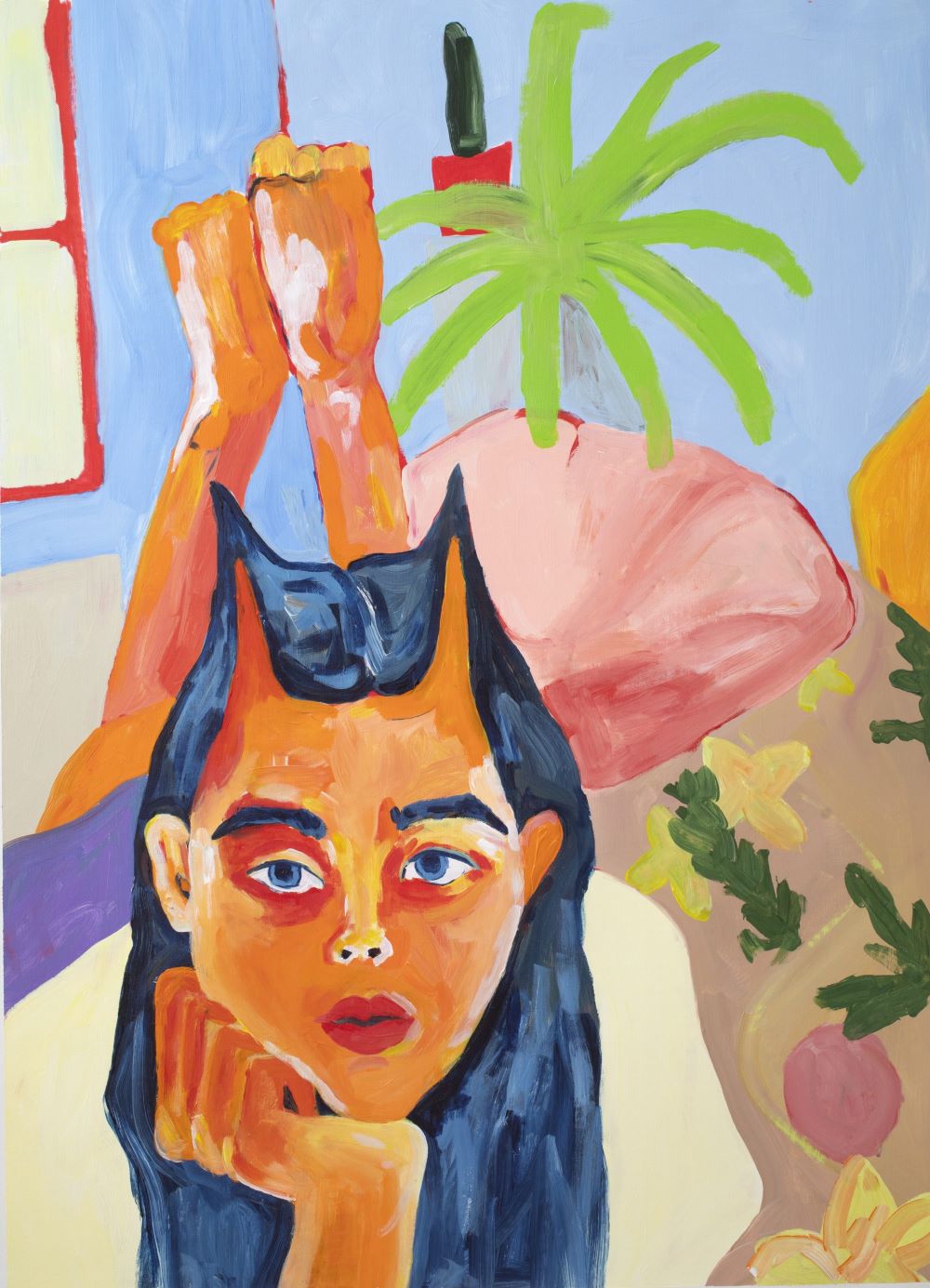

WA: I would love to discuss your process before, during, and after painting. Could you elaborate more on what the process is like for you? From the moment you observe, document, go to your studio, prepare, to painting. Also, I’m wondering, when you realise new works, are they always final?
DD: I usually have an idea of what I want to make when I go to my studio. So, I usually set up my colours, I choose maybe five to eight different tubes of colour and see what goes together. I don’t really sketch from my imagination, I usually have a photo reference. I make my own canvases, so I choose what kind of size I want to do. Sometimes, I randomly cut the canvas and then it’s all wonky. And then I’m like, “Okay, well, that’s not my problem, it’s the guy who needs to frame my painting later.” Then, I sketch the image that I’m going to paint directly onto the canvas and just start. I have a very hard time letting a painting go. I’d rather paint over it many times until it looks like something I imagined, which sometimes takes a month and a half. For example, one colour can be off and another colour can be great, but then it makes the other colour clash with the other colour. And then you have to change that colour. And when you change that colour, then that colour doesn’t work anymore. So it’s that moment where I don’t even know what the result could look like. But sometimes, it could be ready sooner, when I don’t want to overwork a painting, even though I could always add more details.
I think my artwork is a little bit awkward to look at. So sometimes when I look at it, I think, “it makes me a little uncomfortable”. And I just leave it at that. I’m not interested in making beautiful images, because the world is already full of pretty pictures. So, I would rather make something that you would have mixed feelings about. So, when I see the result I also have mixed feelings about it. I would not be sure if I like it or not, but I would like it enough to say it’s completed. And those kinds of paintings are the ones that I have the closest relationship with at the end, the ones that have something weird about them. The kind when you look at it makes you look twice and you have to ask yourself “what about it is pleasing” and makes you ask questions.
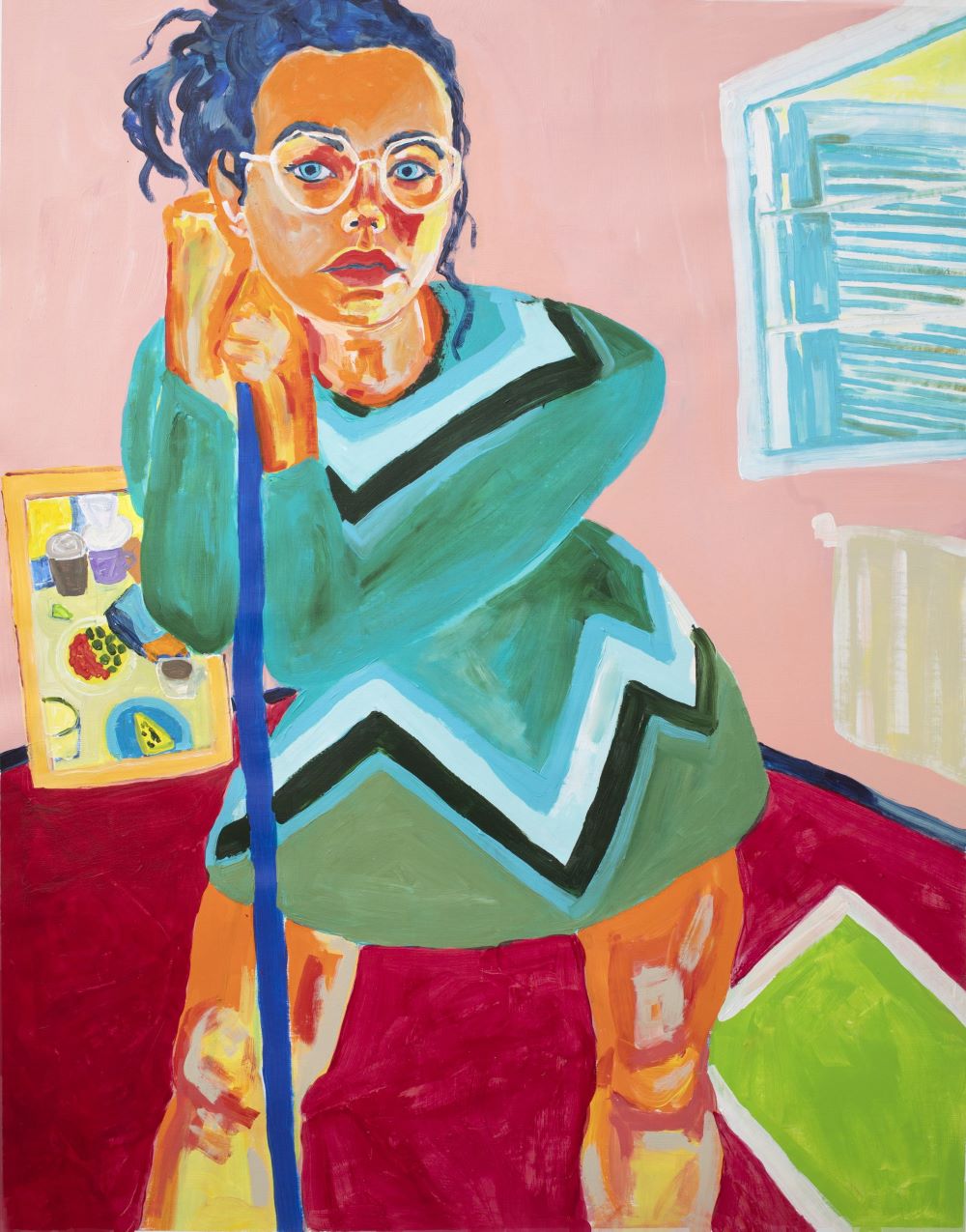

WA: Beside the autobiographical, you also depict familiar people, scenes, and objects from your immediate surroundings. Could you tell us about your relationship with these characters, scenes, and objects?
DD: The people who are in my previous artworks are my friends or people who I have some connection with. But usually they are my good friends. Generally, friendships are sometimes complicated, everything is not perfect all the time. Through those paintings, similar to how I paint myself, painting these people helps me understand what I feel towards them and how I look at that person. For instance, my friend Aziza and I have a very special relationship. So then I decided that I wanted to paint her because she’s a significant figure in my life. The series of paintings titled Bitter Oranges in My Garden reflects the friendship I have with my girlfriends that is bittersweet.


WA: Your paintings are super colourful and vivid. Is there a significance behind your choice of colours?
DD: I don’t really know why I use so much colour. With photography, I was never into black and white. Even when I was taking photographs, I was always drawn to coloured pictures. When I started painting at university, I liked mixing colours, understanding how you mix certain colours that give you a new colour. And for some reason, I see everything in colours. In my paintings, I don’t use black at all, because I feel like it’s so contrasted from everything. So usually, if I want to paint something in black, it would either be a very dark brown, or green, or blue. It has a little bit of colour and nuance to it. Whereas black is too harsh in a way. That’s how I feel for now. I don’t know, maybe in the future I will use it.


WA: Besides your painting, you work with other mediums such as sculpture with ceramics and video. But now at the moment, you are mainly focusing on the medium of painting. Is there a specific logic behind your transition from one medium to the other?
DD: With ceramics, it’s a really different process from painting. It is really interesting, but at the same time scary because when you take clay it is usually brown or gray – one toned. So then when I make colourful sculptures, it is not one hundred percent in my hands, because I can’t control those colours as much as I control paint on canvas. Let’s say I’m making a sculpture and trying to envision how it looks colourful, but then it’s just like a brown glump in front of me. I just have to trust the process and result. In terms of the shape, even when I’m sculpting, it looks kind of naive. You could look at it and think that a child could have made it. Truthfully, that’s how I also feel sometimes about my paintings. It’s difficult to accept and trust what the hand makes which is why at the beginning I wasn’t sure if my hand could paint, draw, or even make these shapes and forms. So I was kind of battling with that. But I feel like now I’ve overcome it. And now I’m trying to do the same thing with ceramics, where I’m kind of like, “Is it good?” or, “Does it look nice?” It’s just a different process with all these different mediums. And I think because I tend to get bored really easily, I’m kind of like a restless person. So if I wouldn’t put all my energy into doing these experiments in my work life, I would probably put it in my personal life, and then my life would be upside down all the time. So I feel like my work is like a playground. Sometimes I go to work and think, “Is this my job?”. And sometimes I think, “My job is kind of cool”. But in my experimentation with mediums, the mental aspect is very important for me.
WA: Have you thought of experimenting with other mediums other than painting, video, and sculpture?
DD: When I first moved to Tunisia, I made some rugs from softer materials. It was a series of eight rugs, which was a very interesting medium for me to work with. In my last show, I wanted to include so many things. But I was aware of the fact that I just don’t want to work every medium into one show. I think maybe the next project could focus more on wood making, or some other material, instead of trying to fit everything into the same exhibition or same project. I’m super open to different things. Like I said earlier, it keeps it fun and interesting.
WA: You are currently working on a new series of paintings that will be shown in April 2022; what can we expect from this new body of work?
DD: Well, I think it’s gonna be a little crazy and festive. The subject matter by itself is already obnoxious and crazy, looking at wedding traditions, and all these colourful and loud things. I’m trying to explore how to make it kind of obnoxious, tasteless, and kitschy. In a good way, obviously. It’s weird for me to try to explain it. I don’t even know what I’m expecting. But what I can tell you is that it will be a lot of fun. And making it is a lot of fun. I hope it reflects in the work. Also, I thought, if my previous series was a little dark, then maybe this new body of work could also show the difficult aspects of a wedding, which is joyous. There is a lot of pressure, there are rituals, codes, and expectations that go along with the theme of a wedding or marriage. So it’s kind of a serious topic that is very close to my heart. But I don’t want it to be a sad story.
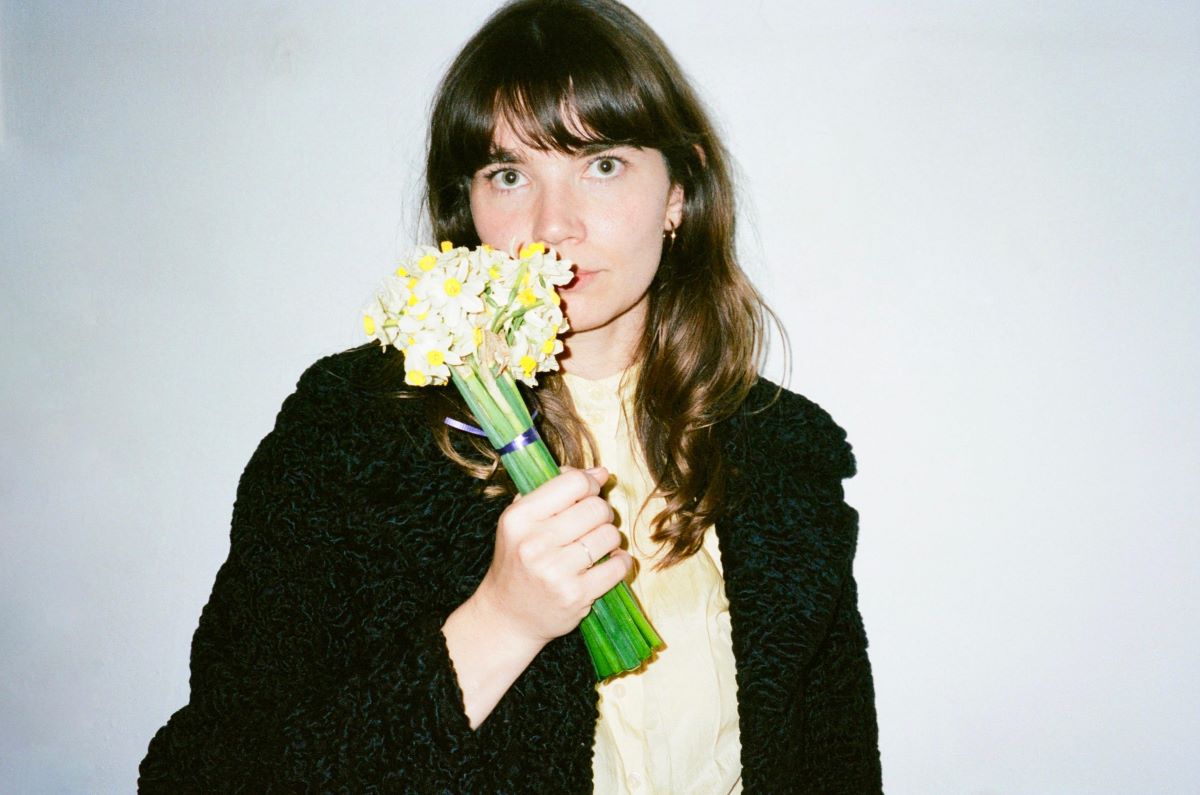

WA: My final question is; what’s on the horizon for you?
DD: I don’t know. Hopefully fun things and interesting projects. I hope that I will get to travel and meet new people. I would like to meet the international art crowd and artists. Also, it’s not easy to do this profession, even though sometimes it might seem like it is. Being an artist is a full time job 24/7 that goes with you wherever you go. So, I hope I learn sometimes how to compartmentalise a little bit… but again, I make art from my life so I guess you can never escape your life.
Images courtesy of Dora Dalila.


 In Conversation: Dora Dalila
In Conversation: Dora Dalila 
